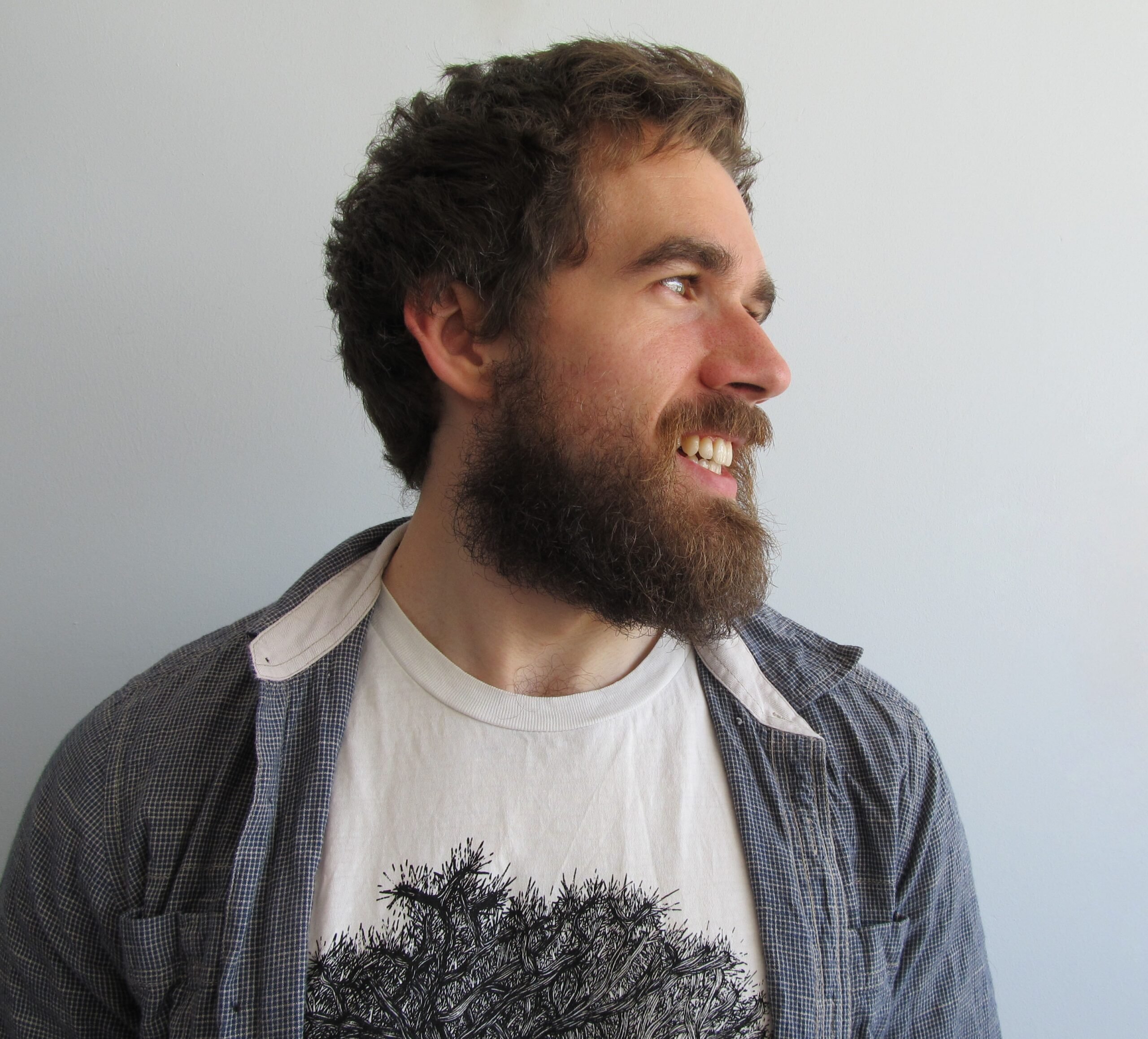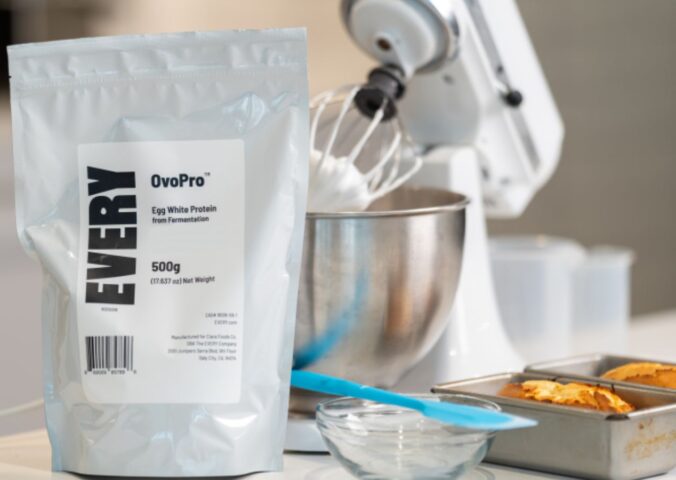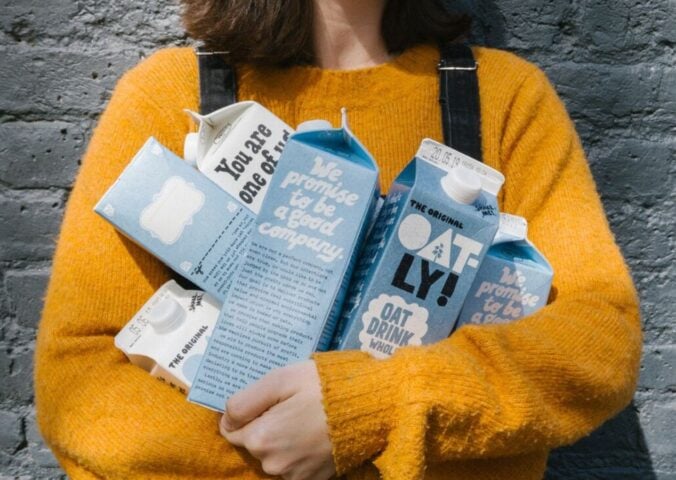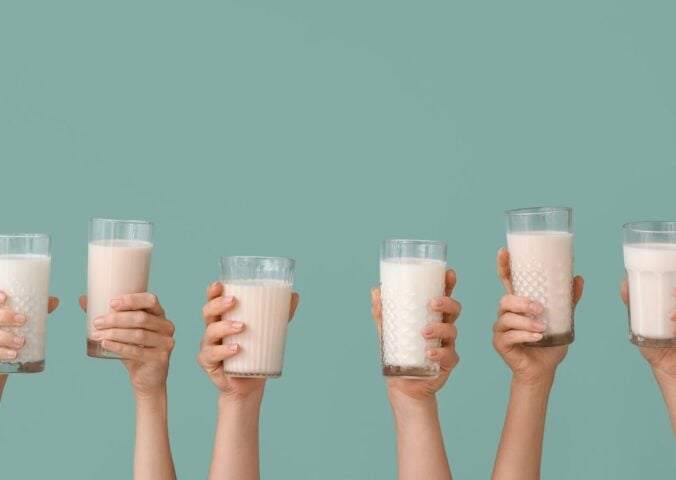La Vie will be one of the biggest names in the plant-based food sector over the next few years for a simple reason: it’s walking a proven path to success and isn’t deviating from it.
Marketers love to showcase “innovative” and “groundbreaking” new solutions to marketing. The reason why I admire La Vie is that it isn’t doing that. It’s being humble in the face of decades upon decades of consumer research. It isn’t trying to reinvent the marketing wheel; it’s following a proven method.
I’ve written before on the topic of product innovation within the vegan space. La Vie makes unbelievably good vegan bacon. But whilst the product is fantastic, its marketing strategy is equally brilliant.
You see, what’s great about entering the retail and fast-moving consumer goods (FMCG) sector is that we know the recipe for success. It’s one that has already been concocted. It’s been recreated thousands upon thousands of times, with little variation by many brands before. The main ingredient for that recipe is summed up in one word: availability.
Physical availability
First up, that’s about physical availability. This is all about distribution. Your products need to be in as many locations as possible. They need to be physically accessible and available to buy. Food shopping habits are very baked in. Major studies on habit formation have shown it typically takes life-altering events such as becoming parents or moving house to change when and where you shop. Charles Duhigg’s The Power of Habit highlights just how difficult it can be to alter a customer’s shopping habits.
In short, no matter how groundbreaking your product, people will not upend their supermarket shopping habits and go out of their way to regularly purchase it. You need to bring it to them – be in as many convenient locations as possible, so that you can slot into consumers’ existing habits.
For scale-up brands undergoing growth, as much work should go into securing listings with major retailers and distributors as you put into the product, the brand, the manufacturing. The more listings you have, the more people will see your product, and the more customers you will have simply by being physically accessible.
Often small brands avoid big retailers and distributors. They fear being dictated to when it comes to aspects of their product like manufacturing, pricing and more. But whilst I love small independent specialist retailers, unfortunately your brand will not grow by being reliant on them alone.
So back to La Vie – how has it achieved physical availability? Not only is it now in most major supermarkets, it’s only gone and got itself into Burger King – one of the biggest fast food chains in the UK, making their bacon very easy to get hold of.
Mental availability
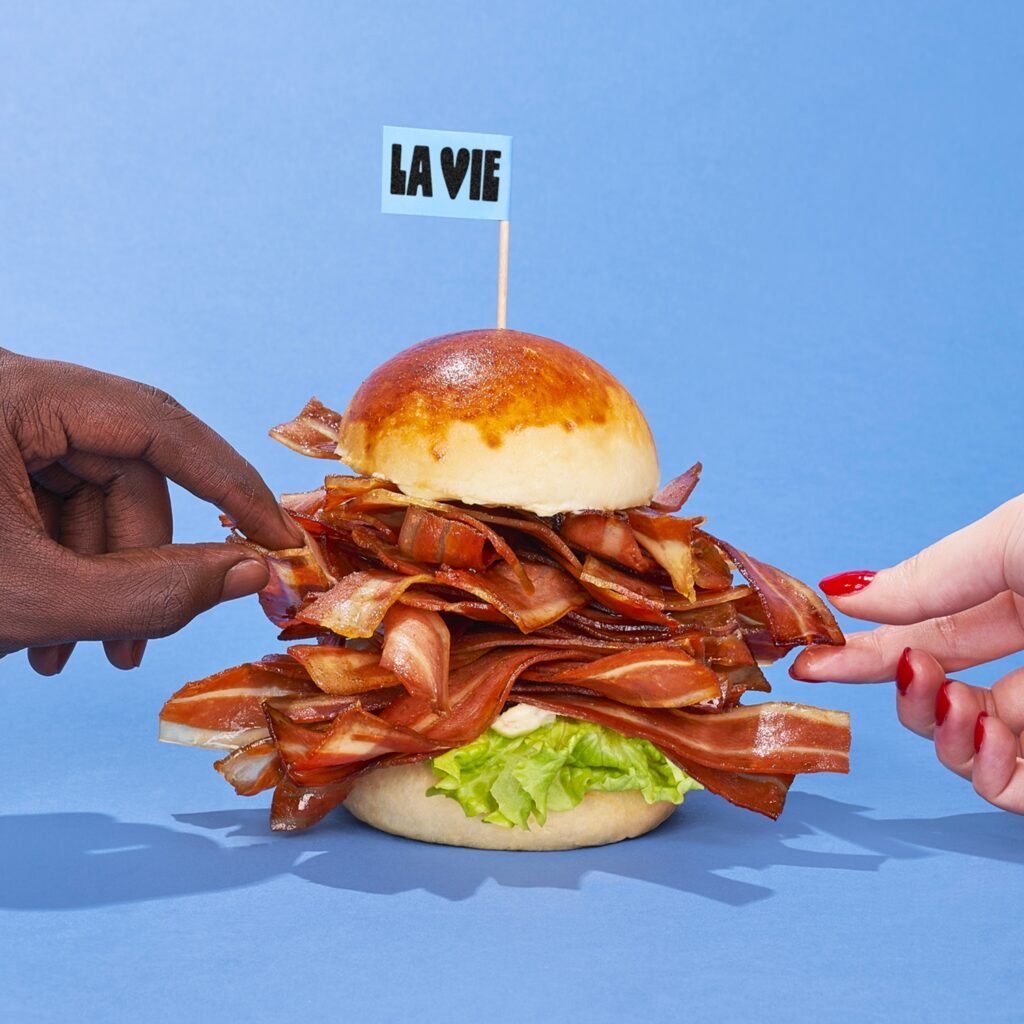
The second part to growing a brand is mental availability. Again, consumers will not break their shopping habits – they are unlikely to make a special trip to the supermarket just to buy your product more than once. So instead, a brand needs to resonate with a consumer when they’re in a purchasing situation i.e. are wandering around the aisles on their weekly supermarket shop. Few supermarket shoppers will be actively seeking your product. If you’re lucky, their gaze will pass over your product for half a second before they move on.
How you capture them in that half a second is about being “mentally available.” Your brand – distinctive assets, logo, color schemes etc. – will fire off a few mental connections in their brains. Maybe, just maybe, they’ll do a double-take, and grab your product from the shelf.
There are no secrets or shortcuts to mental availability – it’s all about advertising. We’re not talking hyper-targeted granular digital ads or super-engaging TikTok campaigns… but good old-fashioned mass market, above-the-line advertising. TV, out-of-home, newspapers, digital ad campaigns – it’s about getting in front of as many eyeballs as possible.
This scares many small brands, and rightly so. It’s expensive. But it works. And there’s a certain hubris that comes with assuming your brand will buck the trend – that you’ll be the one to build huge retail interest off the back of more “affordable” marketing channels like organic social media.
To put it bluntly, there’s a reason why Procter & Gamble, Nestlé, Coca Cola, L’Oréal, and Unilever collectively spend more than $42 billion annually on advertising, and are also five of the biggest FMCG brands in the world. Advertising works.
La Vie has understood this perfectly. It has invested heavily into above-the-line advertising campaigns, including huge out-of-home advertising investments.
Earlier this year, La Vie took out seemingly every bus stop shelter ad in the UK. That little bit of brand recognition, teamed with the bold color schemes, fun assets, and the promise of tasty and innovative plant-based bacon sparks something in people’s minds when they are browsing the plant-based aisle in their supermarket, priming them to purchasing and trying the product. La Vie are bringing home the bacon.
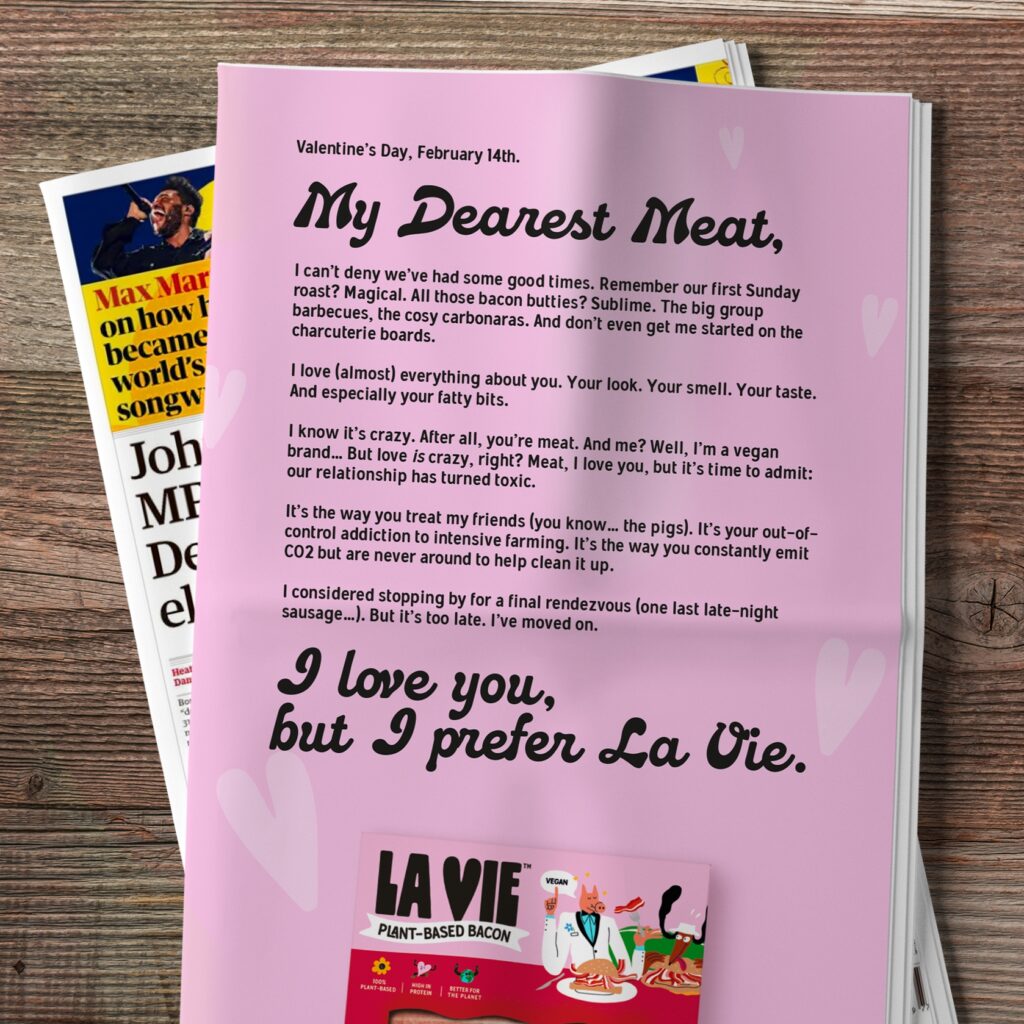
A marketing masterclass
This combination blends physical availability and mental availability perfectly. It’s simply making life convenient for the consumer. They will find La Vie wherever they shop, and through mass market advertising it’ll become a curiosity to them, sparking interest and hopefully an intention to buy. This approach is among the single most well-documented routes in marketing strategy, and it’s practically a guaranteed success when combined with a fantastic product offering, which La Vie certainly has.
We live in a world where marketeers will continue to pitch you the latest shortcuts and “little-known secrets” to market traction – social media stunts, AI-generated content, influencers, NFTs, the metaverse. All of this is hypothetical; it’s unproven and risky at best, a complete waste of resources at worst.
As someone who has spent over a decade in marketing and strategy, I’d advise any brand owners to be wary of the marketing snake oil. Put your faith in the tried and true. Physical and mental availability will always be a near guaranteed route to FMCG and retail success.
La Vie will be a household name within the next few years, and a great active case study for marketeers working in the plant-based space. This is how it’s done.


